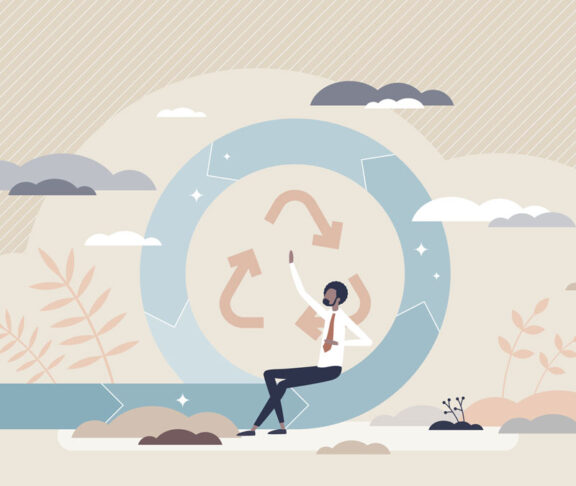
Adam Herriott
Senior Specialist, WRAP
Every day in Britain, we decide whether something goes in the refuse bin, the recycling bin or back into use. Those small choices add up to the future we’ll all live in.
The average UK household generates around a tonne of waste every year.1 That figure shows how much influence our daily decisions can have.
Everyday decisions drive circularity
Transforming our systems towards circular solutions is shaped as much by everyday decisions as by policy or technology. Policies and innovations are important, but on their own, they cannot deliver the change we need.
Circularity is not only about recycling and recovering materials once we have thrown them away; it also means designing products and services that keep resources in play for longer. Refill packaging, repair schemes or sharing platforms all reduce the demand for scarce virgin materials and help prevent waste at source.
Circular model and behaviour change
For instance, when my son eventually outgrows his first bike, we won’t be stashing it in the shed to languish before being discarded. Instead, we’ve chosen to rent it. When he’s ready for the next size up, the old one will go back to the company, refurbished and passed on to the next lucky child. That simple ‘cycle’ captures the essence of a circular economy.
We need to see wider adoption of rental and subscription models, as well as more products designed with repair and reuse in mind. Yet, behavioural barriers such as habit, convenience, trust and perceptions of hygiene still stand in the way. These are not just technical challenges but mindset challenges, which make behaviour change essential.
When behaviour connects with the wider system through smart design, better infrastructure, clear regulation and bold business choices, the impact is multiplied.
We need to see wider adoption of rental
and subscription models, as well as more
products designed with repair and reuse in mind.
Our current linear economy is unsustainable
The food, textiles, packaging and products we use every day generate nearly half of global greenhouse gas emissions, while driving waste, pollution and biodiversity loss.2 Yet, opportunities for change are growing all around us, from refill stations on our high streets to businesses embracing repair and reuse models.
By scaling these approaches, we not only cut waste but also unlock green growth and create jobs in repair, remanufacturing and recycling industries. The choice is ours: we can cling to a throwaway culture, or we can build a future where circular living is normalised, not only in boardrooms, but in every home.
[1] Gov.UK. 2025. Official Statistics: UK statistics on waste.
[2] Henderson, P. 2023. Ellen MacArthur Foundation. The circular economy: a missing piece in city climate action plans?

